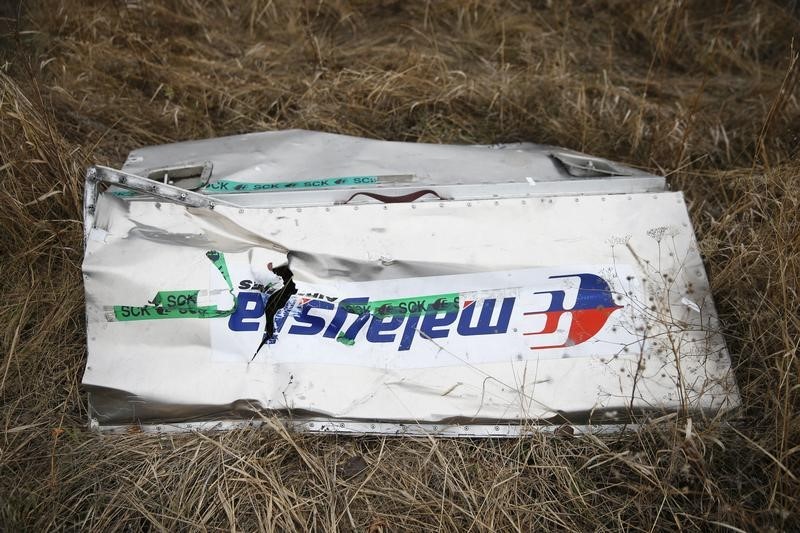By Morade Azzouz
TOULOUSE, France, Aug 5 (Reuters) - International crash experts began examining on Wednesday a wing part that washed up on the Indian Ocean island of Reunion last week, hoping to determine whether it comes from the missing Malaysian MH370 jetliner.
The examination of the part is being carried out under the direction of a judge at an aeronautical test facility run by the French military at Balma, a suburb of the southwestern city of Toulouse. Reunion is one of France's overseas territories.
Malaysian officials who are leading an international air crash investigation were due to witness the inspection of the part, which was flown to the French mainland at the weekend.
Officials from the United States and manufacturer Boeing (NYSE:BA) BA.N were also on hand to advise whether the piece can be tied to Flight MH370, which went missing on March 8 last year while en route from Kuala Lumpur to Beijing with 239 people on board.
The initial examination was expected to last until Thursday but Malaysian officials were on stand-by in Kuala Lumpur in case any results could be announced as early as Wednesday.
Malaysia has said the piece of debris, a wing surface known as a flaperon, had been identified as being from the type of plane that disappeared.
The airliner is believed to have crashed in the southern Indian Ocean, about 3,700 km (2,300 miles) from Reunion.
Investigators will try to confirm that the part comes from the missing Boeing 777 and glean whatever clues they can about the cause of the crash, experts said.
But the question of why the aircraft vanished may be clearer only when the main debris field is found, and its flight data recorder and cockpit voice recorder have been recovered.
"A wing's moving surfaces give you far fewer clues than bigger structures like the rudder, for example. As a single piece of evidence, it is likely to reveal quite little other than it comes from MH370," a former investigator said.
The Balma test centre specialises in metal analysis and is equipped with a scanning electron microscope capable of 100,000 times magnification. It was used to store and analyse debris from an Air France jet which crashed in the Atlantic in 2009.
Investigators will examine the barnacled part for numbers that could tie it too the missing jet or other forensic clues.
The Boeing 777 was minutes into its scheduled flight when it disappeared from civil radars. Investigators believe that someone deliberately switched off the aircraft's transponder, diverted it thousands of miles off course, and deliberately crashed into the ocean off Australia.
In January, Malaysia Airlines officially declared the disappearance an accident, clearing the way for the carrier to pay compensation to relatives while the search goes on.
An A$120 million ($88 million) hunt along a rugged 60,000 sq km patch of sea floor 1,600 km (1,000 miles) west of the Australian city of Perth has yielded nothing.
The search has being extended to another 60,000 sq km (23,000 sq mile) and Malaysian and Australian authorities say this will cover 95 percent of MH370's flight path, at a cost of A$50 million. ($1 = 1.3557 Australian dollars) (Additional by Tim Hepher, Siva Govindasamy, Praveen Menon, Emmanuel Jarry; editing by Mark John and David Stamp)
